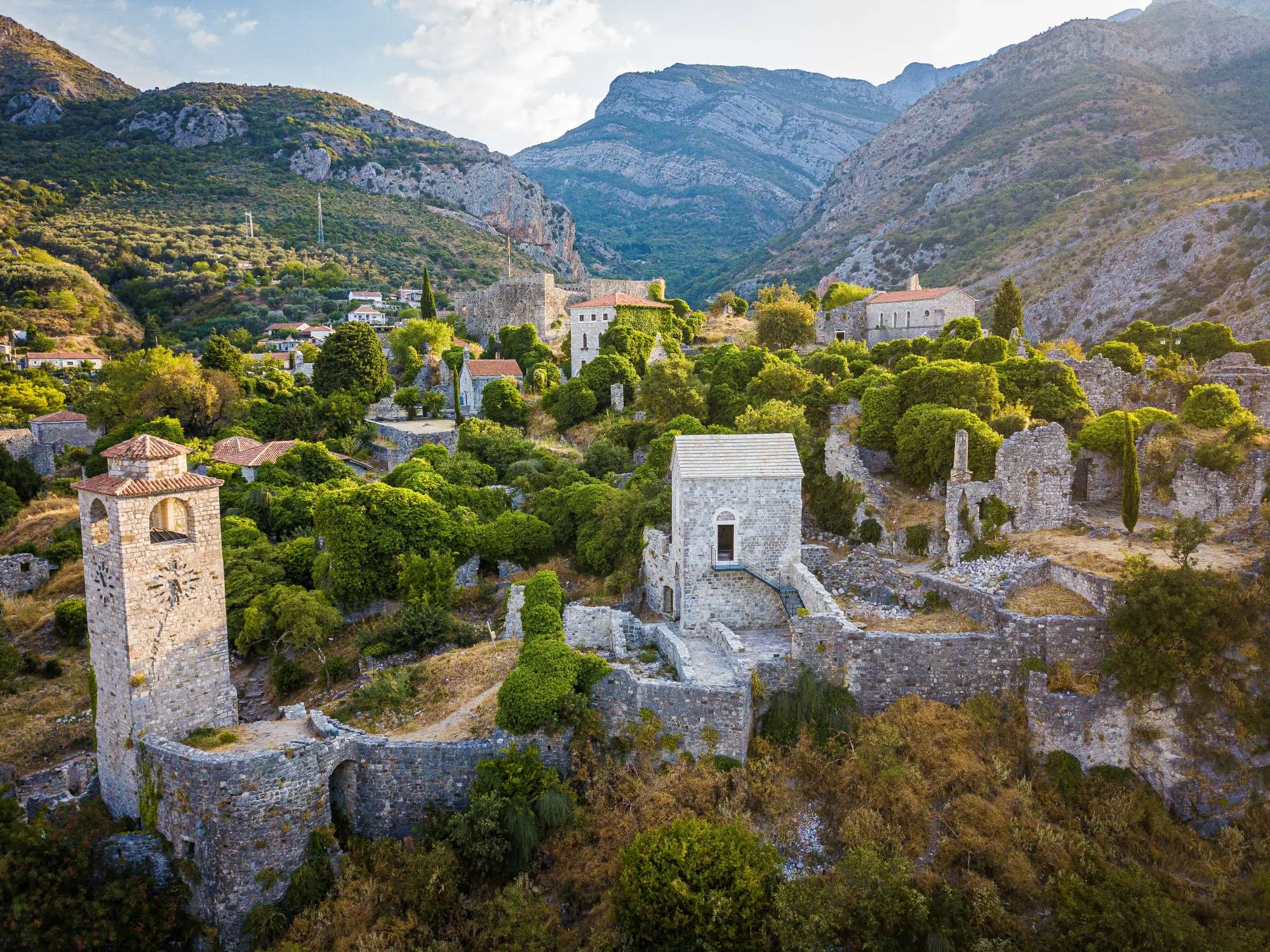The historical pearl of the Adria region! The Old town of Bar is one of the most important sites of medieval Europe
The wealth of a nation can always be seen in its cultural heritage, but also in sites teeming with millennia-old secrets. One such pearl was hidden in the very south of the Adriatic, in lush canopies and covered with ivy.
Its history, according to archaeological finds, takes us back 2500 years, and its first records date back to the 8th century, when it was the epicenter of political, cultural, and economic events.

The Old Town of Bar – Fortress Old Bar, Photo: Steffus, Depositphotos
The Old Town Bar, located on a flat limestone rock, about 5 km away from the sea coast, was called Antibareos in the first records and during the reign of the Byzantine Empire. Cut off from the south and east by a chasm, although it did not have a position on the coast, it provided natural protection and a defensive possibility, and its position attracted the Illyrian population since prehistoric times.

The Old Town of Bar – Fortress Old Bar, Photo: krugli86, Depositphotos
Throughout the Middle Ages, it was under different governments, from Byzantium to the Venetian Republic, but the Old Town Bar still managed to preserve its identity even today.
For centuries, money was minted there, raw materials such as metals and fabrics were traded, and it was also a center of craft production, especially famous for silk and gold.

The Old Town of Bar – Fortress Old Bar, Photo: fotokon, Depositphotos
Although it did not have the blessed position that Ulcinj had, the Old Bar used its fertile position for the production of olive oil and wine, which contributed even more to its economy.
According to some written sources, the city had from 80,000 to 100,000 trees, most of which were hundreds of years old, and produced up to 300,000 liters of oil.
Some of these olive trees have survived to this day, and one of them is among the oldest olive trees in Europe.

One of the oldest olive trees in Europe, Photo: Dvrcan, Dreamstime
Despite the strong offensive, the Old City of Bar still fell into the hands of the Ottoman Empire, who ruled it until 1878, when they were defeated by the Montenegrins and left the city. After that, people moved down to be closer to the sea, where today’s municipality of Bar was formed.
It was also damaged in the 1978 earthquake, and since then, renovations and research into its history have been carried out.
Today, the Old Bar bears witness to the rich past of this area and represents an important cultural and tourist destination that attracts visitors from all over the world and revives the stories of the past preserved by its stone streets.




Leave a Reply